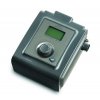Caitlen, I agree with others about this being a great effort, but at risk of offending those who hold the 10% rule inviolate, it is something akin to a magic number - endowed with great significance but with unexplained meaning and whose origins are indistinct if at all traceable.
Some traceable facts
- the CSJ website now advises pack weight of 10-15% of body weight. Some people have earlier guides from the CSJ that use just the lower figure, but this doesn't reflect their current advice.
- 'The Complete Walker IV, a classic for hikers, suggests a maximum FSO (from the skin out) of 1/3 of body weight for 'backpacking as an enjoyment p.54
- It also suggests that reasonable hiking loads would be between 1/4 and 1/5 of body weight, noting that this is for multi-day hiking in wilderness areas where one needs to be carrying more food than is required on the Camino.
- The CSJ recommended packing list for someone like me who wears L or XL clothing exceeds 10% of my body weight before it goes into a pack. In my case, the CSJ list weights 8500gm compared to a 10% target of 7500gm. It is well within the 15% upper limit when in a pack. Note this includes 1li of water, but no food.
Using the Complete Walker 20% FSO for your circumstances, you would have:
- a FSO target weight of 11kg
- you say you are wearing 1.58kg, leaving 9.42kg
- your current gear list and pack comes in at 5.67kg. leaving 3.75kg
- if you allocate 2kg to water and food, you have a residual of 1.75kg
- which you don't have to use, but you could carry more and still stay within this target.
The same analysis using the CSJ upper band of 15% would be:
- a target pack weight of 8.25kg
- you say you are currently carrying 5.67kg, leaving 2.58kg
- if you allocate 2kg to water and food, you have a residual of 0.58kg
- which is about 1/3 of other approach, but you could carry a little more and stay within this target.
So what is the meaning of it all? To borrow a phrase - to walk far, carry less.
My own experience is that I can achieve 16-20km a day carrying 20kg, a bit more with a push, when I am bush walking on good tracks. With a 10kg load, I have managed ~72km in two days, which I did three days before walking the Camino in 2010. Unladen, I have done 50km in a day and backed up to add 18km the next day, or 60km in a day and not walked the following day.
I think this is pretty powerful evidence, but it doesn't establish a limit, just a general observation that the more one carries, the shorter one's comfortable daily distances will be.
The other side of the trade-off is that extreme weight saving become extremely uncomfortable in one way or another, and also extremely expensive (or so my wife would have you believe!).
Regards,
ps if you you would need to count that as extra insulations, and add it to your carried load, not use it to calculate pack weight





















